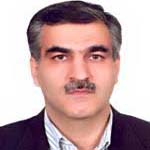Effect of Quasi-Biennial Oscillation (QBO) on the Rossby wave breaking over Europe and West Asia: wave activity aspects
In the present study, using the ERA-INTERIM reanalysis data for daily mean of geopotential height, temperature, horizontal wind speed and relative vorticity at 300, 200, 150, 100 and 50 hPa levels, the wave activity and wave activity flux for cyclonic and anticyclonic Rossby wave breaking events that occurred during the easterly and westerly phase of QBO, over Europe for the winter time 1979-2018, were calculated and analyzed. Results showed that during wave breaking events at latitudes around 20-50N are affected by QBO with easterly and westerly phases. As such, the wave breaking events over the Atlantics (east of the Meditranian and west of Asia) during QBOe are weaker (stronger) compared to those during QBOw. The amplitude of the troughs is larger (smaller) during QBOe compared to QBOw and mridional wave activity flux associated with the wave breaking events during the QBOe is smaller (larger) compared to QBOw. While the wave breaking events over the west of the Meditraniean (0-30 N), affected from the tropical jet stream associated with QBO, is different for anticyclonic and cyclonic wave breakings and is described briefly in the following. During the anticyclonic wave breaking events in QBOe, the subtropical jet is shifted over north east of Africa and north of the Arabian Peninsuls and a jet stream is formed at mid latitudes over the south east of Europe. While, in QBOw the subtropical jet stream is intensified over northwest of Africa and is merged with the mid latitude jet stream over southeast of Europe (White et al., 2015). Therefore, in the QBOw, over the Meditranean and west of Europe, the slope of the trough is increased and penetrates to lower altitudes. Consequently, the equatorward wave activity flux caused by anticyclonic wave breaking is increased and the anticyclonic wave breaking is stronger during QBOw compared to QBOe. During the anticyclonic wave breaking events in QBOe, the thermal wind balance is valid near the tropical jet stream associated with QBO over the west of the Indian Ocean and south east of Africa, as secondary circulation is formed that causes the intensification of the subtropical jet stream over north of the Arabian Peninsula and Iran, downstream of the trough. Along with the intensification of the tropical jet stream associated with QBOe over the Atlantics, the subtropical jet stream is shifted to higher latitudes and is intensified. Unlike the trough the altitude of the ridge over the east of the Atlantics is decreased and the zonal wind speed upstream of the trough over the north west of Europe and east of the Atlantics is increased. The Equtorward wave activity flux during the anticyclonic wave breaking events in QBOe is weakened. During the anticyclonic wave beaking events in QBOw, the equatorward shift of the mid latitude jet stream and its merge with the subtropical jet stream downstream of the trough is accompanied with the intensification of the trough over north west of Africa and east of the Mediterranean. Intensification of the jet stream associated with QBOw over the Atalantics causes the subtropical to be shifted equator ward and thus the subtropical jet stream over the east of the Atlantics and north of Africa is intensified and is tilted in the direction NW-SE. During QBOw, along with the penetration of the trough to lower altitudes over Europe, the ridge over the north east of the Atlantics and north of Europe is intensified. Intensification of troughs and ridges causes the intensification of upstream meridional flow and thus the equator ward of wave activity flux associated with anticyclonic wave breakings is increased. During the cyclonic wave breaking events in QBOe, the subtropical jet is shifted over north east of Africa and north of the Arabian Peninsula and a jet stream is formed at mid latitudes over the Europe in the upstream of the trough. While, in QBOw the midlatitude jet stream is shifted equatorward and is merged with the subtrupical jet stream over northwest of Africa. Therefore, in the QBOe, the slope of the trough is increased and penetrates to lower altitudes, over the Meditranean and East of Europe. Consequently, the poleward wave activity flux caused by the cyclonic wave breaking is increased and the cyclonic wave breaking is stronger during QBOe compared to QBOw. During the cyclonic Wave beaking events in QBOe, intensification of the tropical jet stream associated with QBOe over the Atalantics and south of Africa causes the subtropical jet to be shifted poleward and thus the subtropical jet stream over the west of the Mediterranean and southwest of Europe is intensified.
- حق عضویت دریافتی صرف حمایت از نشریات عضو و نگهداری، تکمیل و توسعه مگیران میشود.
- پرداخت حق اشتراک و دانلود مقالات اجازه بازنشر آن در سایر رسانههای چاپی و دیجیتال را به کاربر نمیدهد.



